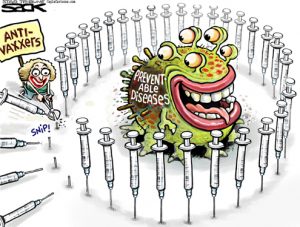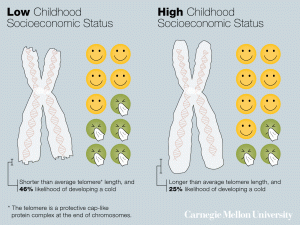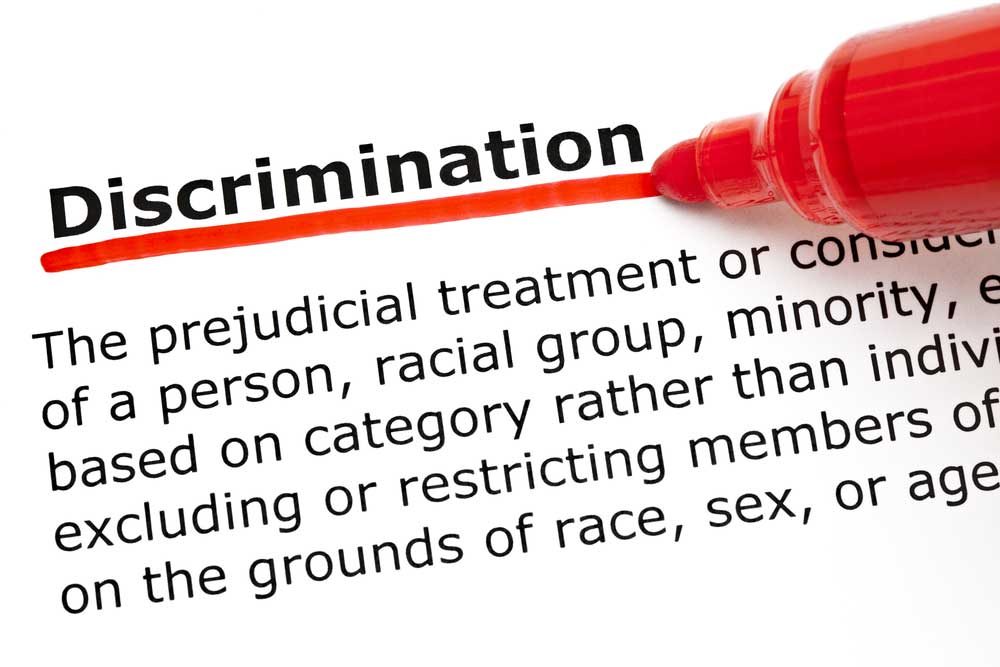I disagree with the conclusion “routine childhood immunization should not be compulsory if adequate levels of immunization can be achieved by other means,” by Isaacs, Kilham, and Marshall [will be referred to as “Authors”] in “Should routine childhood immunizations be compulsory?”
If I’m being honest, I feel troubled by my own opinion because it contrasts with that of published scholars affiliated with the Departments of Immunology and Infectious Diseases, the Children’s Hospital at Westmead, the Paediatric Trials Unit and the Department of Paediatrics, the Women’s and Children’s Hospital. Nonetheless, in this blog post, I will outline the reasons for my disagreement.
The Authors base their conclusion on “ethical and practical reasons” (Issacs). Ethical concerns they mention include: autonomy, parental rights, coercion, trust, and weight of risks-benefits. And, the only practical reason they mention is difficulty enforcing.
“Practical” Reason: Enforcement
Because the Authors only present one practical reason, I choose to address this point first. The authors frame the physical restrainment of a child for immunization as an aggressive act comparable to assault. This comparison, in my opinion, is exaggerated and dramatic as no threat is posed and there is no intent of physical harm or injury. This opinion is made considering assault as “an act that threatens physical harm to a person, whether or not actual harm is done” (Oxford Dictionary). The Authors say restrainment for immunization is only “justifiable in a situation of extreme risk,” but they fail to provide criteria of what is considered ‘extreme’ and ‘risky’ (Issasc). Infectious diseases can definitely be considered a potential risk, and in the way I see it, immunization is actually preventing extreme risk.
Ethical Reasons
Parental Rights and Autonomy. The arguments for parental rights and autonomy are weak. Immunizing one’s child does not make or break a parental style of child rearing. Receiving an immunization(s) does not directly shape a child’s habits, values, morals, or beliefs. The Authors, themselves, even mention the ethical consideration that “ people who are afraid of harming their child by immunization …[generally tend] to be more worried about causing damage to one’s child by doing something to them rather than by not doing it” (Issacs).
The Authors counter their very own argument the “protection of the community only applies for transmittable disease” with the concepts of herd community and free riders. They say “an important implication of herd community is that failure to immunize a child against a transmissible infection may not only render that child susceptible to infection, but may imperil other children” (Issacs). Perhaps it is okay (not terribly harmful and dangerous for the community) if a small handful of people are not immunized. Even then, we cannot all be the exception to the rule; we cannot all be free riders because as “the number of free riders increases, the population becomes more susceptible, and disease will start to circulate” (Issacs).
Risk-Benefits and Trust. The Authors do not specify which routine childhood immunizations should not be compulsory. So, assuming their argument encompasses all routine childhood immunizations, their argument for risk-benefit is ineffective. Although the “risk benefit equation varies from disease to disease,” the overall benefits of immunizations outweigh the risks for the diseases. Vaccines are scientifically proven to be effective. It is the very reason why immunizations are worthwhile. In fact, “most childhood vaccines produce immunity about 90 – 100% of the time” (U.S. Department of Health and Human Services).

The Authors claim “making immunizations compulsory renders trust redundant,” which implicitly claims there is a problem with redundancy (Isaacs). To that end, I ask, is there a problem with redundancy? Is it hurtful or inappropriate for health care professional to repetitively give reassurance? I do not think so. Also, does the enforcement of immunization invalidate physician-patient trust? Nope. The Authors associate enforcement with coercion, which is paradoxical to their saying if “high levels [of immunization] can be maintained through encouragement and incentives, this effectively achieves the aims of the moderate communitarian, without the need for legislation” because incentivizing can be considered a form of coercion as well. In fact, when talking about inducement, the Authors pose the question: “Could this be seen as a form of coercion, particularly to poorer families who are far more dependent on such welfare payments”(Issacs)? I think, yes. Enforcement of immunizations, I think, would be an act of paternalism by the government.
Alternatives to compulsion
Education. While I disagree with the Authors overall conclusion, I do agree with their idea we should increase education re: benefit of immunizations. However, dispersion of information and health care education can be a difficult and challenging process. For example, there may be “unreliable funding and resources,” and we need to consider “long duration [is] needed to create lasting change” (World Health Organization). Perhaps eventually we will reach a point where everyone is educated, but in the meantime, I believe it better to implement compulsory immunization.
Outbreak Legislation. While it is possible to “enact emergency legislation to compel immunization,” in the event of an outbreak, pandemic, or bioterrorist attack, it would be a race against the clock or a matter of luck for those who are not immunized. Would it not be better to have received the immunization ahead of time? We should not view this only as a matter of planning for what might or could happen, but also for the sake of matters such as communitarianism, consequentialism and community rights. It’s true; “a circumstance of risk involves a possible occurrence of something that has been valuated as harmful along with an uncertainty about its actual occurrence” (Beauchamp, 230). But we ought to wonder: is it worth the risk?
No-fault and compensation schemes. While I do acknowledge vaccines sometimes harm people, I still believe the benefits of immunization outweigh the slim risks. I do not find it necessary for me expand on the effectiveness of vaccines which counters the few cases. That being said, monetary compensation is viable as the amount spent on treating vaccine preventable diseases is incredible. I defer to the following to prove my point: https://www.cdc.gov/vaccines/programs/vfc/pubs/methods/

Closing-thoughts
The Authors have made several strong and valid points in favor of compulsory immunization. They have even made arguments for compulsory immunization, which counter the very arguments they make against compulsory immunization. Now that I have expressed my opinion and provided the facts and personal sentiments to why I disagree with the Authors, I’d love to hear what you guys think. Do you agree with the arguments against compulsory immunizations the Authors make?
Citations
Beauchamp, Tom L., and James F. Childress. Principles of Biomedical Ethics. 7th ed. New York, NY: Oxford UP, 2001. Print.
Isaacs, D., HA Kilham, and H. Marshall. “Should Routine Childhood Immunizations Be Compulsory?” Journal of Paediatrics and Child Health. Blackwell Science Pty, 22 June 2004. Web. 26 Mar. 2017.
“Types of Healthy Settings.” WHO. World Health Organization, n.d. Web. 26 Mar. 2017.
U.S. Department of Health and Human Services. “Vaccines.gov.” Vaccines Are Effective. U.S. Department of Health and Human Services, 11 Oct. 2006. Web. 26 Mar. 2017.
“VFC Publications: Supplement.” Centers for Disease Control and Prevention. Centers for Disease Control and Prevention, 23 Apr. 2014. Web. 26 Mar. 2017.






